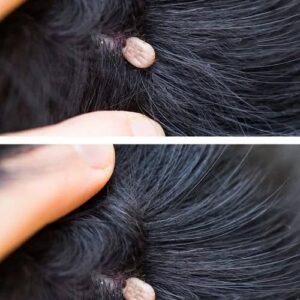Finding a small lump beneath your skin, whether on your wrist or foot, can be a cause for concern. While it’s natural to feel uneasy, it’s important not to panic. The bump you notice might be a cyst, a common occurrence that’s usually harmless. Let’s take a closer look at what cysts are, when they should be a ca
use for concern, and the best steps to take if you find one.
What is a Cyst?
Cysts on Skin: Pictures of What They Look Like
A cyst is a small sac or lump that forms under the skin, filled with fluid or a thicker substance. While the term “cyst” may sound alarming, these lumps are often benign and not something to immediately worry about. Cysts can appear in various parts of the body, and they vary in size, but most don’t cause pain or pose any real threat to your health.
The Common Types of Cysts
Cysts are categorized based on their location and the substance they contain. The most common types of cysts include:
Skin Cysts
Sebaceous cysts (or epidermoid cysts) are typically small, round lumps that form just under the skin. These cysts are usually harmless, often painless, and tend to be filled with a thick, oily substance. In many cases, sebaceous cysts do not require treatment unless they cause discomfort, become inflamed, or grow in size.
Synovial Cysts
Synovial cysts are typically found near joints such as the wrist, knee, foot, or hip. These cysts can develop due to repetitive motion or joint injury. In some cases, synovial cysts might disappear on their own over time. However, if they become painful, inflamed, or bothersome, a minor surgical procedure may be recommended to remove them.
When Should You Be Concerned?
Cyst Removal and Treatment | U.S. Dermatology Partners
It’s common to feel anxious when discovering a lump on your body. However, most cysts are non-cancerous and harmless. Even so, there are certain signs that you should not ignore. If a cyst shows any of the following symptoms, it may indicate an underlying problem, and you should consult a healthcare professional immediately:
Redness and swelling: This could indicate an infection.
Pain or tenderness: A cyst that becomes painful or tender might be infected or inflamed.
Fever: If you have a mild fever along with a cyst, it might be a sign of an infection.
Rapid growth: If the cyst grows quickly or changes shape, it could be an indication that it’s not just a simple cyst.
Difficulty moving: If the cyst is located near a joint and affects movement, it may require medical intervention.
What to Do If You Find a Cyst




